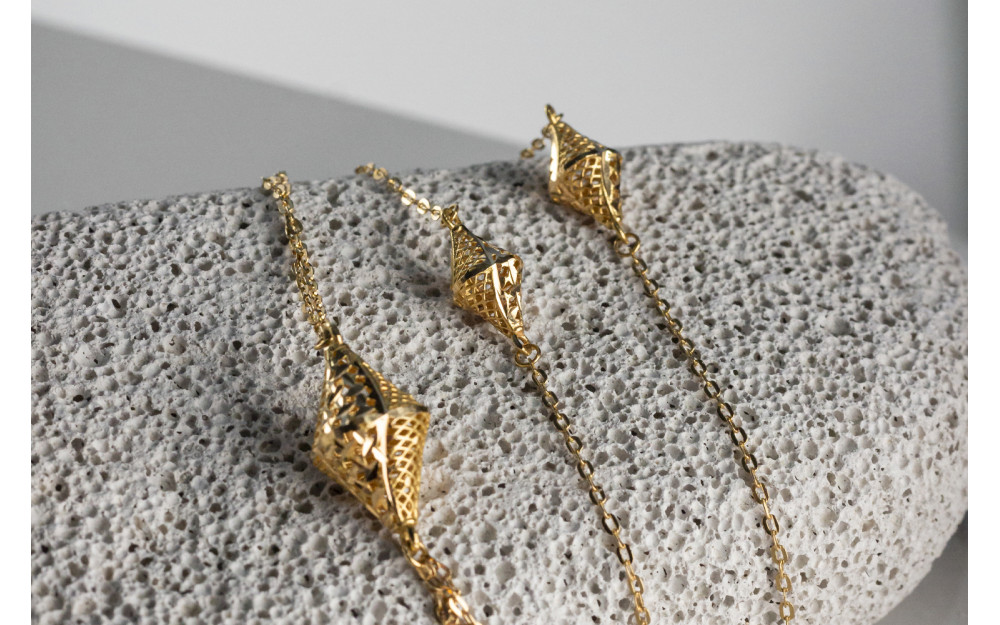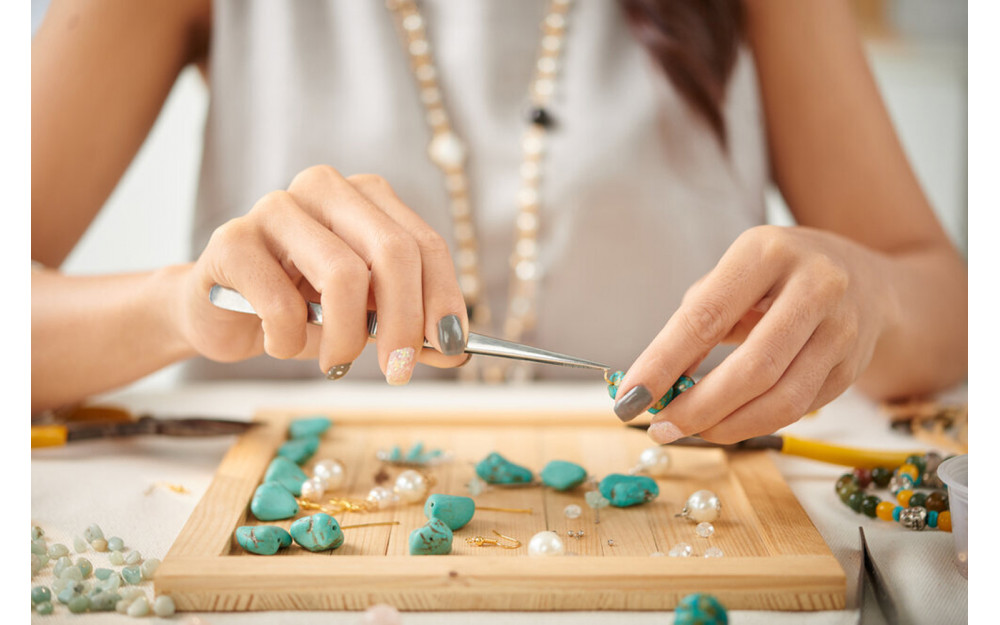Enamel is a common material for jewelry, whether they
are basic school rings or tacky antique items. But what is enamel precisely,
and why does it adhere to jewelry metals so well? Continue reading to find out
more about jewelry enameling and how it's done.
The term "enameling" refers to a centuries-old process of fusing a colored substance (often powdered glass) to a surface at extremely high temperatures, frequently between 1300 and 1600°F. Ancient cultures employed it to make exquisite works of art including vases, coffins, bowls, and jewelry. It still enjoys a strong following in the jewelry business today thanks to its distinctive, eye-catching brilliant glazed appearance.
Enameling process

Cloisonné, champlevé, and stenciling are just a few of the methods used in jewelry enameling. These methods pertain to the methods used to apply the enamel to the object or to prepare the metal's surface for enameling. The typical process for general contemporary enameling is described below:
Things to consider before enameling
What metal is the jewelry made of?
The enamel's foundation can affect both its appearance and degree of effectiveness. Because it never tarnishes and is suited for clear enamels, gold is a fantastic surface for enameling jewelry. Contrary to common belief, platinum has a very moderate expansion rate, making it a good choice for enameling (a term used to describe the lengthening of metal when subject to high heat.)
Since of its vivid yet understated tone, silver is a favorite among enamel fans. However, transparency should be used with discretion because overfiring can make the enamel yellow. For class ring designs, stainless steel is typically coupled with opaque enamels rather than clear enamels.
The enamel's base can have an impact on both how it looks and how effective it is. Gold is a terrific surface for enameling jewelry since it never tarnishes and is suitable for transparent enamels. Contrary to popular opinion, platinum has a fairly modest rate of expansion, making it an ideal material for enameling (a term used to describe the lengthening of a metal when subject to high heat.)
 Silver is popular among admirers of enamel
because of its vibrant yet subdued tone. Transparency should only be utilized
sparingly, though, since overfiring might turn the enamel yellow. Stainless
steel is frequently used with opaque enamels rather than transparent enamels
for class ring designs.
Silver is popular among admirers of enamel
because of its vibrant yet subdued tone. Transparency should only be utilized
sparingly, though, since overfiring might turn the enamel yellow. Stainless
steel is frequently used with opaque enamels rather than transparent enamels
for class ring designs.
What colors and details do you want to enamel?
Enamel is not frequently used to cover the entirety of a piece of jewelry, unlike e-coating or traditional gold electroplating. It is typically employed for detailing tasks. It can occasionally serve as a piece's main point instead of a gemstone, as in the case of the well-known Tiffany & Co. blue enamel heart bracelet. If you want to enamel a piece of jewelry, think about the colors you want and where you want the enamel to go.
The process of enameling

Polish the surface: The object must be polished before enameling since enameling on a rough surface will reveal all the scratches and abrasions underneath the enamel covering. The jeweler applies steel wool to a polishing wheel to remove any defects from the object. It is necessary to remove any existing enamel since covering it will result in a blotchy look.
Clean the jewelry: After being polished, the jewelry is sent to an ultrasonic cleaning tank where bubbles are blasted at it to wash away any dirt or polishing residue. Any pollutants may result in the application of the enamel cracking or becoming uneven, thus the surface must be completely clean.
Apply the enameling: Once everything is ready, a competent jeweler fills in the missing color with enamel. To place the enamel in incredibly small spaces, they may employ specific instruments, such as a unique pin-like device. The jeweler verifies that the enamel is even before sending it for cure.

Cure the enameling: A specialized kiln is used to heat the jewelry to at least 1300 °F. The enamel is then "baked" by the intense heat, fused to the surface, and hardened into a glossy, lasting finish. To guarantee that the enamel adheres to the item properly, the curing procedure might take some time.
Remove the finish product: The jeweler removes the jewelry once the curing is complete, and it is then ready for wear! If the enamel has been correctly put, it will not fracture or flake off for years.
Why should I enamel my jewelry?
If the current design of your jewelry already includes
enamel, you may restore the original shade or choose a new one. Jewelry may be
colored in particular places with enameling, which is much easier to perform
than with gold plating or e-coating. Additionally, you may choose from a range
of hues and combine many colors into one piece of jewelry. Enameling is
frequently more durable than plating due to the curing process, making it a
better investment if you want to modify the appearance of your piece.



